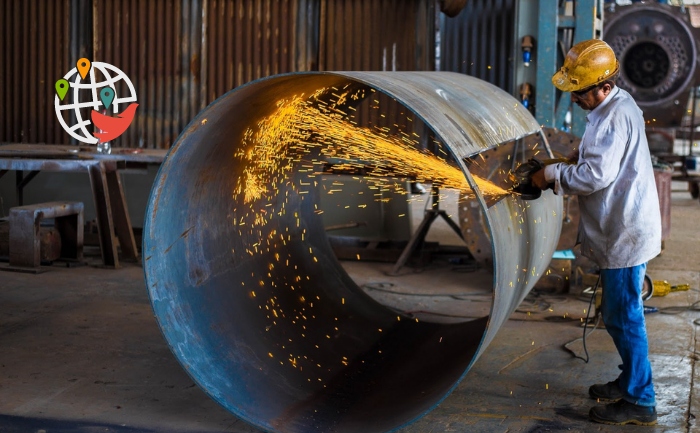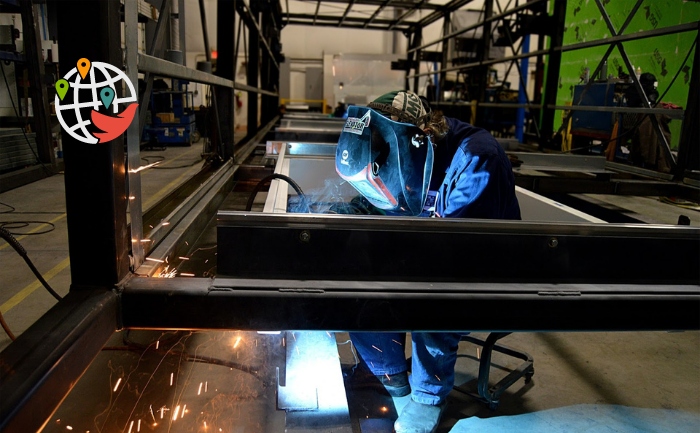Welder Jobs in Canada: Salary, Requirements and Immigration Opportunities

Welders have excellent job prospects and immigration opportunities in Canada. Learn more about the high demand for this profession in Canada.
The profession of a welder is in high demand in Canada, especially in key industries such as construction, oil and gas, and manufacturing. Due to the growth of infrastructure projects and an aging workforce, the demand for skilled welders continues to rise.
Technological advancements have also increased the demand for highly skilled welders and welding machine operators who know how to apply new technologies in their work.
Welder's Salary
A welder's salary in Canada depends on various factors: job requirements, qualifications, working conditions, and employer location. Experienced welders earn more than beginners. Additionally, salaries vary depending on the type of welding required.
The average welder's salary in Canada is $67,394 CAD per year, or $34.56 CAD per hour. Entry-level positions start at $50,700 CAD per year, while the most experienced workers can earn up to $97,845 CAD per year. It's worth noting that salaries can vary greatly depending on the province.
In some cases, welders may receive bonuses for completing projects early or maintaining high safety standards. Some employers also provide medical benefits, including dental and vision insurance.
Welder salaries in Canada remain competitive, especially given the shortage of skilled labor in some regions, which contributes to income growth in this profession.
What do welders do in Canada?
 According to the Canadian Occupational Handbook, welders in Canada:
According to the Canadian Occupational Handbook, welders in Canada:
- read and interpret blueprints or welding process specifications;
- operate manual or semi-automatic welding equipment to fuse metal segments using processes such as gas tungsten arc welding (GTAW), gas metal arc welding (GMAW), flux-cored arc welding (FCAW), plasma arc welding (PAW), shielded metal arc welding (SMAW), oxy-acetylene welding (OAW), resistance welding and submerged arc welding (SAW);
- operate manual or semi-automatic flame-cutting equipment;
- operate brazing and soldering equipment;
- operate metal shaping machines such as brakes, shears, and other metal straightening and bending machines;
- repair worn parts of metal products by welding on extra layers.
Where and how welders work in Canada
As a welder in Canada, you can work as an employee in:
- factories that produce structural steel and plate, boilers, heavy machinery, aircraft and ships, and other metal products;
- sawmills, pulp and paper mills, mines;
- machine shops;
- construction sites;
- oil and gas facilities and pipelines;
- welding contractors or welding shops.
Welders in Canada can also be self-employed. Self-employed welders often work on a contract basis, providing welding services to various clients, including individuals, companies, and construction firms. This type of employment allows welders to manage their work schedule, choose projects, and potentially earn more by working on high-paying or specialized tasks.
Most welders work 40 hours per week. Welders working in factories and processing plants may be required to work nights/weekends or do shift work.
Welders in the construction industry often move to different sites, sometimes in remote regions of Canada. Short periods of unemployment between projects are common for these workers.
Employment Requirements

To work as a welder in Canada, there are several key requirements that depend on the level of qualification, experience, and the province where you plan to work.
-
Education and training. The basic requirement is completing high school, but to increase your chances of employment and earning a higher salary, it's recommended to complete vocational training at a college or specialized welding school. This training usually lasts about three years and includes both theoretical classes and practical on-the-job training.
-
Certification. In most Canadian provinces, except Alberta, welder certification is voluntary, but it significantly increases your employment chances. The Red Seal certificate is the most recognized certification, allowing you to work in any province without the need to re-certify when moving.
-
Apprenticeship and practical experience. To obtain certification, you need to complete an apprenticeship program, which typically lasts three years and includes 6,000 hours of work under the guidance of an experienced mentor. If you already have welding experience from abroad, you can go through a qualification verification process in Canada (called "Challenge a Trade") and obtain an equivalent Canadian certificate.
-
Language skill requirements. While welders don't need a high academic level of English or French, you need to demonstrate basic reading and writing skills to interpret drawings and technical documentation.
-
Additional certifications. To increase your employment chances and salary, it's recommended to obtain additional certificates for various types of welding, such as GTAW, GMAW, FCAW, PAW, SMAW, OAW, SAW. These certifications allow you to work with different materials and in various conditions, making you more competitive in the job market.
-
Medical and background checks. To work as a welder, you need to pass medical and background checks to ensure there are no contraindications for working in complex and potentially dangerous conditions.
How to immigrate to Canada
If you have experience as a welder, you can immigrate to Canada through one of the immigration programs suitable for this profession.
Many Canadian immigration programs are suitable for welders, for example:
Future of the profession
Despite automation and the introduction of new technologies, the demand for highly skilled welders in Canada will persist in the coming years. The main reasons include an aging population, growth in infrastructure projects, and a shortage of young specialists in this field. It's expected that between 2022 and 2031, the number of job openings for welders will exceed the number of available candidates, creating good employment opportunities.





























